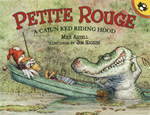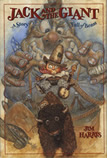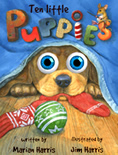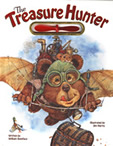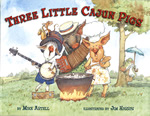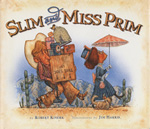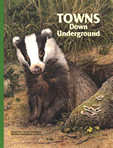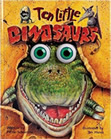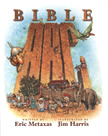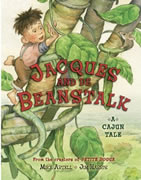Jim Harris Talks About…
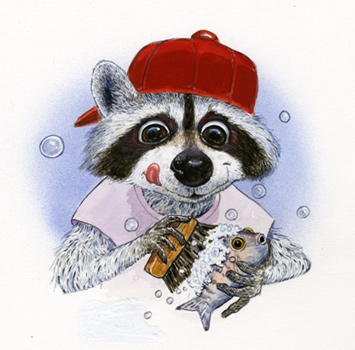
Illustrating a Children’s Book From Start to Finish
Well… here’s how it goes for me.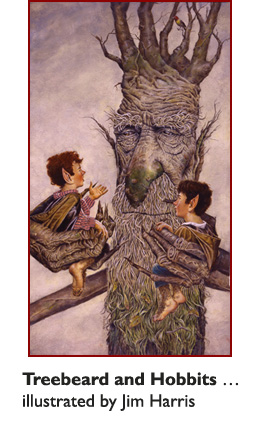
I’m sitting at my art table, leaning back and squinting at my latest character, wondering if he would look better with a little bit bigger nose and maybe red hair, when DING DING, there’s a new email on my computer.
This obviously requires investigation, so I perform an specialized illustrator’s technique known as "the swoop." The swoop is a complex motion that combines a swift lean-back in the chair with a two-foot kick off and causes the chair and its occupant to swivel wildly and careen at dangerous speeds across 15 feet of concrete flooring. (Please note that this is a professional technique, requiring years of practice, and is not recommended for amateurs.)
Anyway, upon arrival at the computer on other side of the studio, it becomes immediately obvious that this particular email is an exciting one… because it is from an art director… and they have a book they need illustrated!
Step one, clearly, is to forward the email to my wife, Marian, so she can begin preparations for proper celebratory fare… something like pizza with maybe blueberry pie for dessert usually  works nicely.
works nicely.
Next comes a conference (by phone or email) with the art director. The first thing to figure out is … can I do this book by the art director’s deadline? If yes, great. If not, sometimes the art director will be kind enough to adjust the book’s publication schedule to a later season (like move it from Spring 2010 to Fall 2010.) Usually, we manage to get something worked out.
Often at this stage the art director will mention one of my previous books or other art samples that they would like this book to look like. This helps me know what feel they are looking for in the book. And sends me in the right direction as far as the amount of detail or caricature they would like to see. But quite often, I am left to my own devices… and that’s the most fun of all, you can imagine, for an artist! 
Next step in the process, the art director sends over the manuscript, to make sure it’s a story I enjoy. Nobody wants to hire an artist who doesn’t even like the story they’re working on… so this is the time for honesty all around! Fortunately I like almost all the stories art directors send me. So, next the publisher sends a contract. When the contract is all signed, dated, stamped and sealed in multiform, quadriplex, legal-length microscopic font … it’s time for the work to begin!!!
First I have to figure out who lives in this book. Who are the characters? Should they be portrayed as people or animals? Poor or well-to-do? Fat or skinny? Happy or glum? Will they wear ordinary clothes or crazy ones? If they’re animals, will they be dressed in their fur or in human-type clothes? Should they be silly or serious?
These aren’t decisions you can make in your head. Not me, anyway. I draw  bunches of pencil character sketches and twist and turn and pull and push them around and dress and redress them until there’s a nice selection. Then I line up my kids and see what strikes them. This usually results in some revisions, or at least some tweaking, and then I send the sketches (which may have evolved to full-color renderings by this stage) off to the art director to see what he or she thinks.
bunches of pencil character sketches and twist and turn and pull and push them around and dress and redress them until there’s a nice selection. Then I line up my kids and see what strikes them. This usually results in some revisions, or at least some tweaking, and then I send the sketches (which may have evolved to full-color renderings by this stage) off to the art director to see what he or she thinks.
Sometimes the art director approves the characters immediately; other times I work up more renderings to include the art director’s suggestions, until we come up with a mutually happy solution.
You might be wondering what the author has to say about all this… after all it IS their book! The answer is “not much, other than making non-binding comments.” Which is pretty tough for the author, I know. But that is life in the publishing world.
Once the characters are decided on, it’s time to divvy the text up into spreads. There are usually 14 spreads (but this can vary), plus art will be needed for the cover and the endpapers and the title page. By this time, the art director has emailed me blank dummy sheets that show the exact size the book will be and exactly how many pages are available.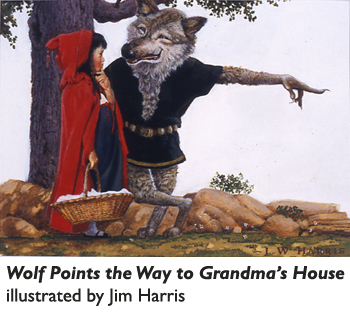
I should mention that at about this stage in the book, there is typically a major staff turnover at the publisher, and either the editor, editor-in-chief, art director, or head of marketing (somebody, in other words, who has been making major decisions on this book) will send a letter saying they are buzzing off to a new job at another publisher, and their replacement will be so-and-so. Wishing them all the best, I plug the new info into my contact list for the book, and carry on as if nothing unusual has happened (which is, indeed, the fact of the matter.) And the good side of it is, you get a lot of friends at a lot of different companies!
I slide the text around on the dummy pages until I feel like I’ve got a good “scene” on each page (which could be the equivalent of 4 words or 100 words), and then start sketching out the spreads.
By the way, its standard for the text I’m given at this point to be, quote, “not fully edited copy.” Meaning that changes here and there will happen… but hopefully nothing that affects the art.
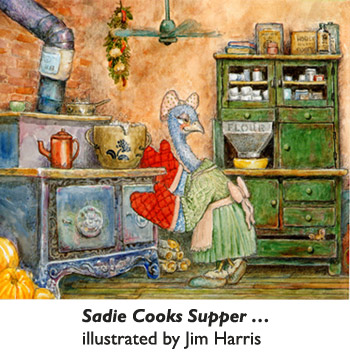 I like to put variety in the designs. In other words, full spreads alternating with spot illustrations. Pages with color bleeding off the edges alternating with pages that have plentiful white space. Close-ups of characters alternated with more landscape-y scenes. Etc. Etc.
I like to put variety in the designs. In other words, full spreads alternating with spot illustrations. Pages with color bleeding off the edges alternating with pages that have plentiful white space. Close-ups of characters alternated with more landscape-y scenes. Etc. Etc.
Next, I ask Marian and the kids to give their opinions on the spread sketches. Now here is where family cohesiveness is really tested. I am expected to put up with comments like…
I really like it, Dad, BUT…
I think the duck looks too scared on page 9.
On spread 2, I can’t see the fox’s tail! It looks like it got chopped off!
I thought the text mentioned two cups falling off the kitchen shelf… I can only see one.
I wanted to see more of the wicked wolf… and less of the other characters!
Why does the Grandma have a hat on this page and no hat on the next one?
I think the last page looks too empty!!!
I don’t think they grow that kind of tree where this story takes place!
I have good reasons for all of these things, of course. Which I explain very carefully and patiently. And then… later…after everybody’s drifted off to other pursuits, I make discreet adjustments, as required.
The second time around… the comments 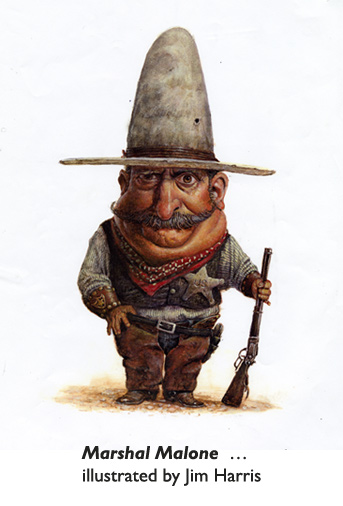 are generally much more satisfactory… (hugs and high-fives being the order of the day for a book that’s looking good) and it’s time to email the sketches to the art director for his or her team’s review.
are generally much more satisfactory… (hugs and high-fives being the order of the day for a book that’s looking good) and it’s time to email the sketches to the art director for his or her team’s review.
While the sketches are at the art director, I’m still busy. I have to find models, costumes and background props to use for painting the final art. Usually I rack my brain for any people I know that would work for models, and if I can’t think of anyone, then I’ll put an ad in the paper describing what I’m looking for. If it’s animals I need as models, same thing. (You’d be surprised how many animals read the paper.)
If the models are supposed to wear old-fashioned clothing, I poke around at vintage clothing stores until I find something. Or, one of my daughters will sew a costume up for me. In the case of the fireman’s coat in 10 Little Puppies, I went down to the fire station and asked one of the firemen to help me get photos of their uniforms. People are almost always very kind and happy to help out.
For props, I look around until I find the piece of furniture or old implement I need. Antique stores are pretty good places.
When the art director sends back their comments, I incorporate them and it’s off and running.
Basically, it’s paint, paint, paint, every day.
I get a few breaks for things like changing the water in my brush-rinse-jar (don’t want my colors getting murky.) Or for stretching sheets of watercolor paper (unless I’m using 300# paper—which saves the trouble of stretching—and I like that! Stretching paper is always such a pain.)
As I go along I’m constantly checking my measurements. Don’t want to send out art that would fit an 8 ½ inch wide book… when it’s supposed to be 9 ¾ wide! Or something similarly embarrassing.

Of course, there's last-minute ideas that have to be shot over to the art director for approval (like… “how about adding a mouse with a sled on the Husky puppy page?”)
Last-minute disasters (like… the lifeguard that looked so nice in the sketches looks TERRIBLE in the color version. )
Last-minute solutions (like… let’s change the lifeguard from a California dude to a little yellow duck-lifeguard. Hey, much better!)
Meanwhile, the support team is busy… building a wooden box (for shipping the art) and simultaneously helping sample the chocolates. (If wood shipping boxes seem like overkill, I should explain that the very first painting I shipped as an illustrator got folded neatly in half by the courier. It was good that it was insured and the courier paid almost a thousand dollars in damages… but I don’t want that to happen to another customer! Thus the frequent use of wooden boxes.)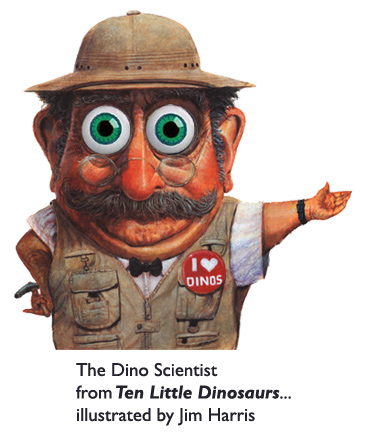
And then, one day, before you know it, it’s all done. Art director’s comments on the final scans all included. Crop marks all in place. Illustrator’s notes-to-self erased off the edges. Cover sheets applied.
One final count to make sure everything’s in the box. And then… it’s gone.
Packed up. Shipped off.
Feels a bit empty around the studio without all that art piled around. Seems almost like losing a friend.
Well, you know what that means… Time to start another book!
But first, how about another celebration. Pizza anyone???
Images and Text © 2009 Jim Harris. All Rights Reserved


